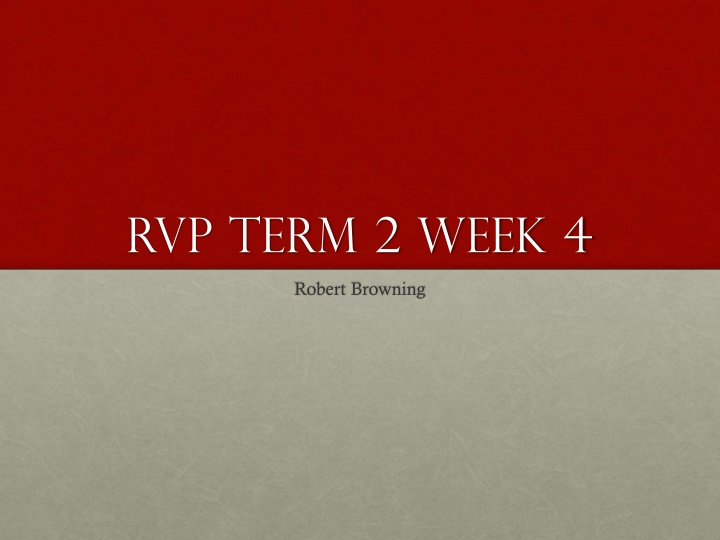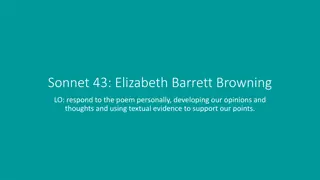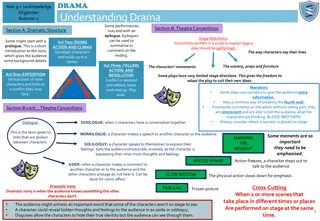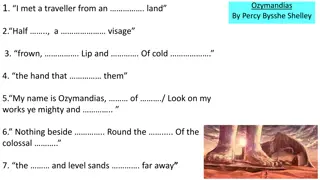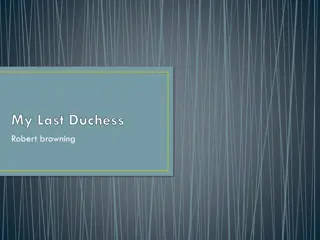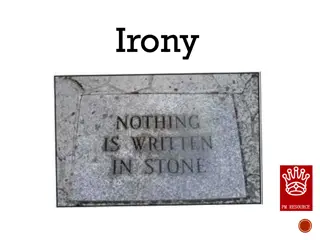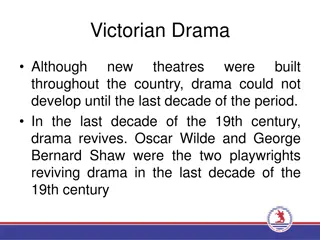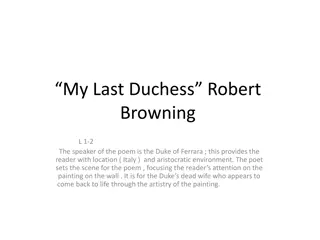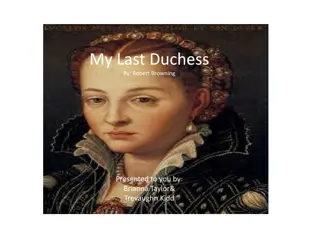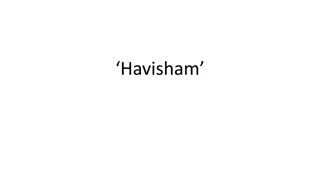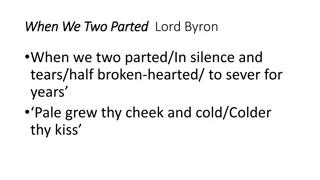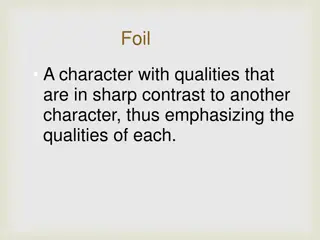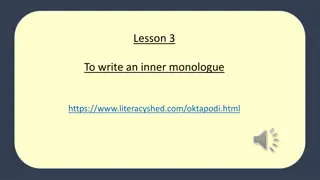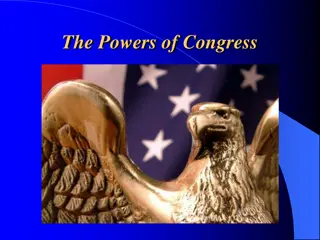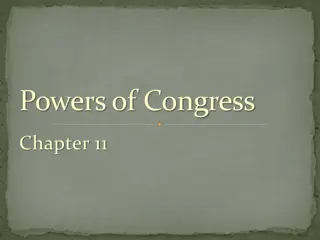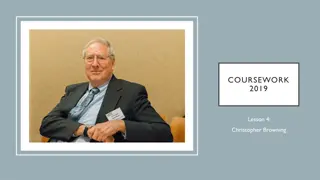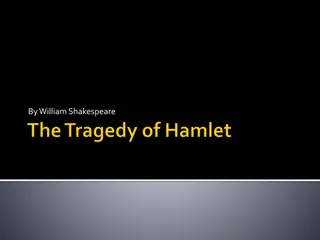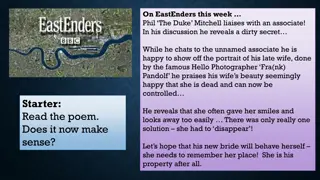Analysis of Robert Browning's Dramatic Monologues and Implied Audience
In this content, we delve into the elements found in the dramatic monologues of Robert Browning, focusing on implied addressees, ideal recipients, and the implications of the dramatic form on the relationship between speaker, addressee, and reader. We explore how the presence of an implied audience influences the speaker's words, adding layers of irony to the narrative.
Download Presentation

Please find below an Image/Link to download the presentation.
The content on the website is provided AS IS for your information and personal use only. It may not be sold, licensed, or shared on other websites without obtaining consent from the author.If you encounter any issues during the download, it is possible that the publisher has removed the file from their server.
You are allowed to download the files provided on this website for personal or commercial use, subject to the condition that they are used lawfully. All files are the property of their respective owners.
The content on the website is provided AS IS for your information and personal use only. It may not be sold, licensed, or shared on other websites without obtaining consent from the author.
E N D
Presentation Transcript
RVP Term 2 Week 4 Robert Browning
Class Plan My Last Duchess : instructor Andrea del Sarto: class (Time permitting): Caliban Upon Setebos : instructor
implied addressee, ideal recipient See Booth, Rhetoric of Fiction (1961) Not useful for all poems, and you do not have to use this vocabulary; nevertheless, something to notice when present, but not to always look for Implied addressee Is the speaker talking to someone? Is that person present? Absent? How is that person reacting? Are they talking back, doing something to the surface of the poem; or are they silent? Ideal recipient The poem may be addressed to one person but intended for another An ideal recipient gets the poem s references, and may even share its aesthetic/ethical philosophy
Dramatic monologue Comparison: Now, what news on the Rialto? (MoV, I.i.1) Particularly characteristic of C19 Drama in implication of speech taking place within larger world, which poem contains What to read for: Details of surrounding world Implied audience of poem Potential ironies (difference of knowledge between speaker and audience, reader and speaker, reader and audience) The dramatic m. gains additional force from the fact that a silent auditor often constrains or controls the speaker's words, contributing to complex levels of irony within the poem. ( Dramatic Monologue, Princeton Encyclopedia of Poetry and Poetics)
Andrea del Sarto Groups: 1-40, 51-71, 90-115, (244-end) 1. Summarize what happens in these lines. 2. Discuss the relationship between the speaker and the addressee, and in turn how the reader is implicated in this relationship. 3. Pick up one figure in these lines that recurs throughout the poem. Talk about what this recurrence means, in any sense. 4. This poem gives one philosophical account of the role of the artist. Describe a philosophical idea that appears in these lines.
